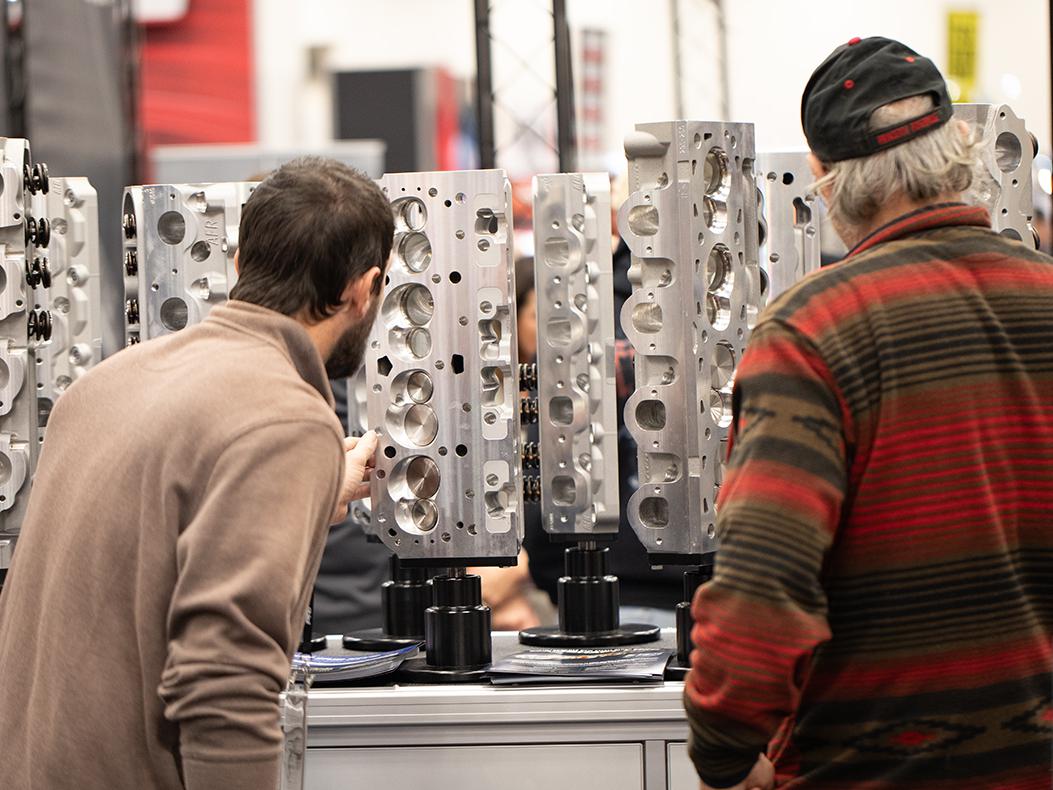Pathways To Power
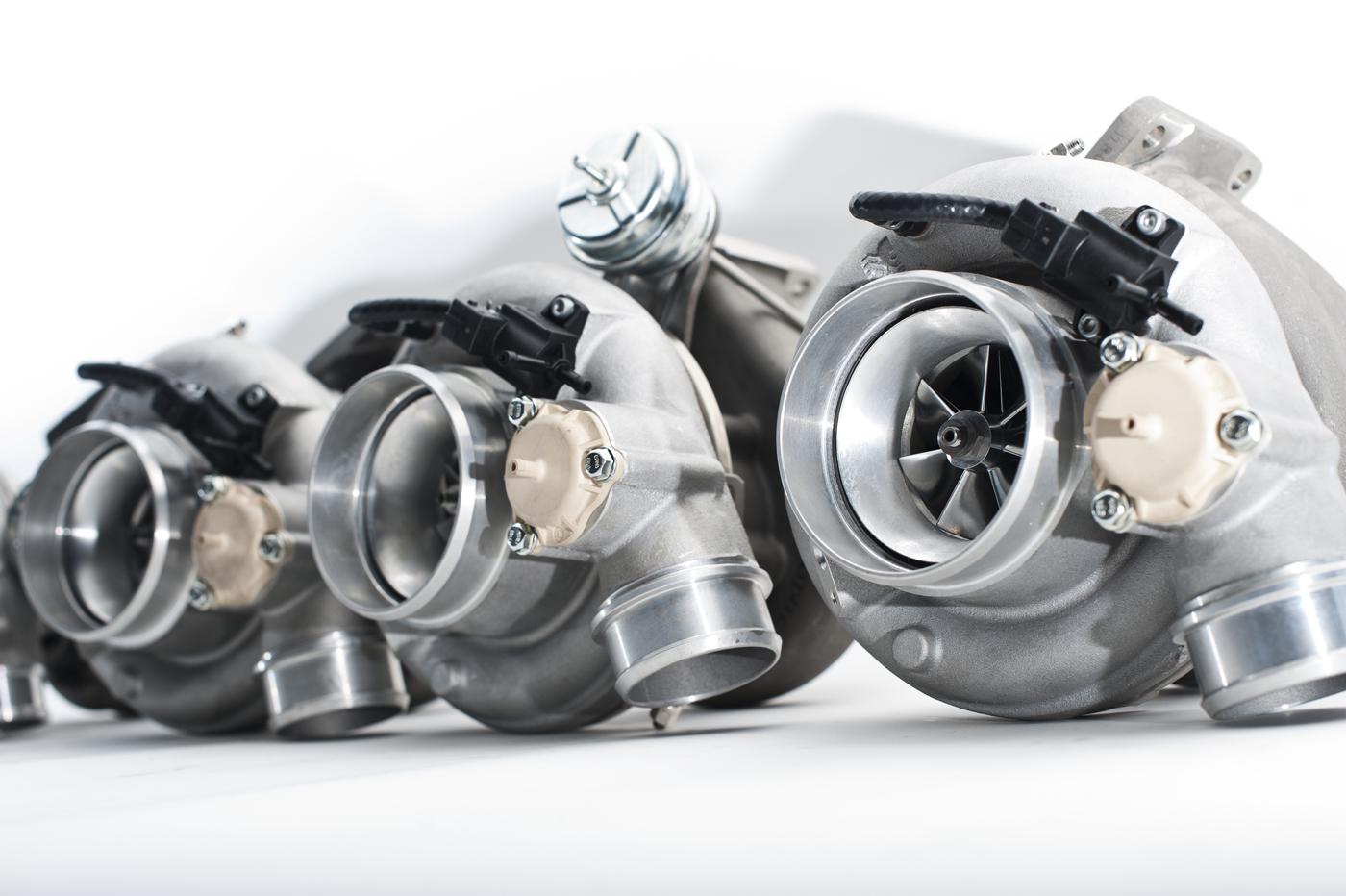
Photo courtesy of Full-Race Motorsports
How supercharger, turbocharger, and nitrous manufacturers are helping racers and engine builders get more out of their performance packages.
“We’ve hit one of these golden ages of horsepower again.”
That’s how Ryan Witte of Holley Performance Products in Bowling Green, Kentucky, summed up what many in the performance industry are thinking about engine power.
“Back in 1994 when we were founded, when you bolted a ProCharger to a 1993 Mustang Cobra, you’d be blown away that you could end up with nearly 400 horsepower from that pushrod 5.0-liter motor,” recalled Erik Radzins of the Lenexa, Kansas, supercharger manufacturer. “Now you can take a bone-stock GT or Bullitt Mustang, add our standard Stage 2 system with a P-1X, and make 1,000 horsepower at the crank—900 at the wheels—with ease. All it takes is our kit, a fuel system, and some E85 in the tank. If you had told me 15 years ago it was going to be that easy, I might have looked at you a little funny. But here we are, and it’s amazing.”
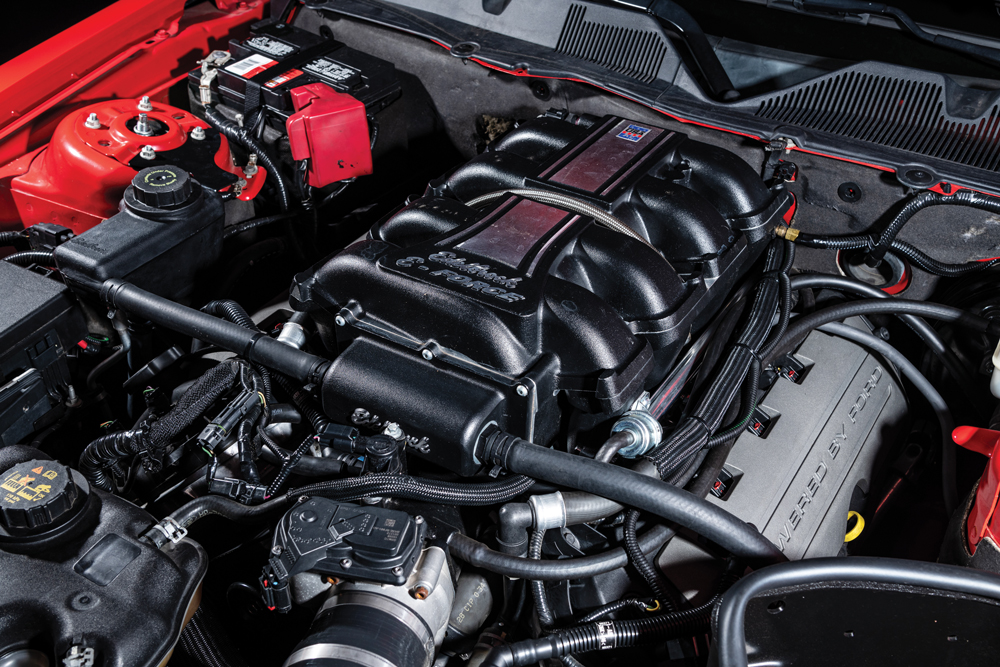
“Racers are constantly pushing the envelope for power needs,” added Jimmy Martz of Vortech Superchargers, Channel Islands, California. “We can see our V-30 race superchargers continue to evolve and support upwards of 3,500 horsepower and beyond in the next couple of years.”
To better understand how racers are achieving those ever-growing power numbers, we recently polled several key players in the power adder category—supercharger, turbocharger, and nitrous manufacturers—to get their read on how to maximize engine output, new products they’re excited about, and how racers and engine builders can better take advantage of this new golden age.
Efficiency
“Bigger is not always better” was a common theme among several of these companies when discussing making power.
“It’s easy to cram a bunch of air into an engine and make a lot of boost,” said David Page of Edelbrock, Torrance, California. “But that’s not always the best strategy. As supercharger and turbocharger designs have become more refined, engineers have looked at things like efficiency. Parasitic drag and air temperatures are the enemy of making power.”
Managing air temperature is “a huge factor in making power,” Page added. “I wouldn’t call it free horsepower. It takes energy of some kind to reduce temperatures.” But products like Edelbrock’s Dual Pass three-core intercooler “uses three oversize intercooler cores and passes the air through twice for reduced air temperatures. That equals a cooler air charge, which equals more power and reliability.”
“People are constantly looking for and focusing on a big boost number, but an overspun blower will lose efficiency and make less power even if the boost number is high,” said Martz. “That’s the hardest thing to get across to customers now. Size doesn’t always mean more power. Sometimes you can have a blower that’s too big for an application. It’ll be sluggish down low and make too much boost up top. We try to design for specific applications and specific motor combinations.”
Kevin Kenney of AGP Turbo in Tempe, Arizona, has had similar issues with customer preconceptions about turbocharger size. “They’ve read something online from a guy who put a giant turbo on a small engine. The car did do the quarter-mile very fast, but it might have gone just as fast with a much smaller turbo that would have also spooled up much quicker, been easier to race, and given you a lot of streetability. If that person had actually tested both back-to-back, they would have picked the smaller turbo because it actually did work better.”
Durability
The quest for power is having a downstream effect on engine components, according to Witte. “We’re going to have to find the limits of engines again before we can add more power to them. Things like cylinderhead sealing, and block and cylinder-head strength and integrity are going to come up,” he explained. “From what I’ve heard, some drag race teams are only getting between five and 20 runs out of a crankshaft anymore. I don’t know if adding power is what they’re concerned about as much as increasing durability while decreasing ET. If you can work with data and better controls so that the entire car and powertrain are working less to do the same thing, you can increase durability.”
Durability is also a concern with the power adders themselves. “Hardcore, exotic turbos are now creating engines that make two, three, even four or more times their original engine output,” said Geoff Raicer of Full-Race Motorsports, Phoenix, Arizona. “When you’re tripling engine output, you have to expect things to fail. But the fact is, that’s not an option if you’re trying to win races.”
A turbocharger rotates at anywhere from 80,000 to 200,000 rpm, Raicer pointed out. “For reference, a jet goes supersonic—Mach 1—at 767 mph. The bullet out of a .357 Magnum is traveling at 917 mph. The rotational speed of a performance turbo at full tilt is 1,342 mph, Mach 1.7. There’s so much energy contained in these turbochargers at these rotational speeds, that when a turbo fails during overspeed, the turbine wheels explode. Can the housing contain the shrapnel of the wheels exploding? Losing races sucks. Blowing up your parts is even worse. But failed turbos can hurt people.” That’s why Full-Race works with companies that perform burst-containment validation testing on their turbos, like BorgWarner, Garrett, IHI, and MHI. “These are massive companies with a lot on the line. They cannot allow an accidental death to occur.”
Crunching the Numbers
The search for more power isn’t always in the hardware. “Data loggers are showing us more data than ever,” said Ryan Lewis of Nitrous Express, Wichita Falls, Texas. “They’re giving us more knowledge about what nitrous and fuel are doing while traveling through the intake manifold, into the cylinder and out the exhaust. This, paired with 3D printers and CNC machines, has helped us develop products at a standard that would not have been achievable in years past.”
Sometimes, though, improvements can be made through lower-tech means. “The simplest thing that is often overlooked is the nitrous bottle valve,” Lewis said. “We have seen people switch from a conventional bottle valve to one of our billet aluminum Lightning 500 valves and pick up as much as 20% in nitrous flow.”
Holley recently released a Version 6 of its engine controller software that includes “a new view in the software to look at all the nitrous stages together on one screen,” Witte said. “You can see what the cumulative nitrous and fuel was in all the stages when they’re all on. That came from talking to racers who wanted an easier way to see what their six-stage nitrous system was doing at any point during the run.”
When talking about nitrous control with his racing customers, Witte has heard that “the fuel is becoming more critical to control than the actual nitrous. Nitrous control is fairly simple when you get to the higher-level stuff. They turn the solenoid on, and it flows a certain amount. But making the fuel do exactly what they want at every point of the run to keep the engine happy has been where we’ve been concentrating with our products.
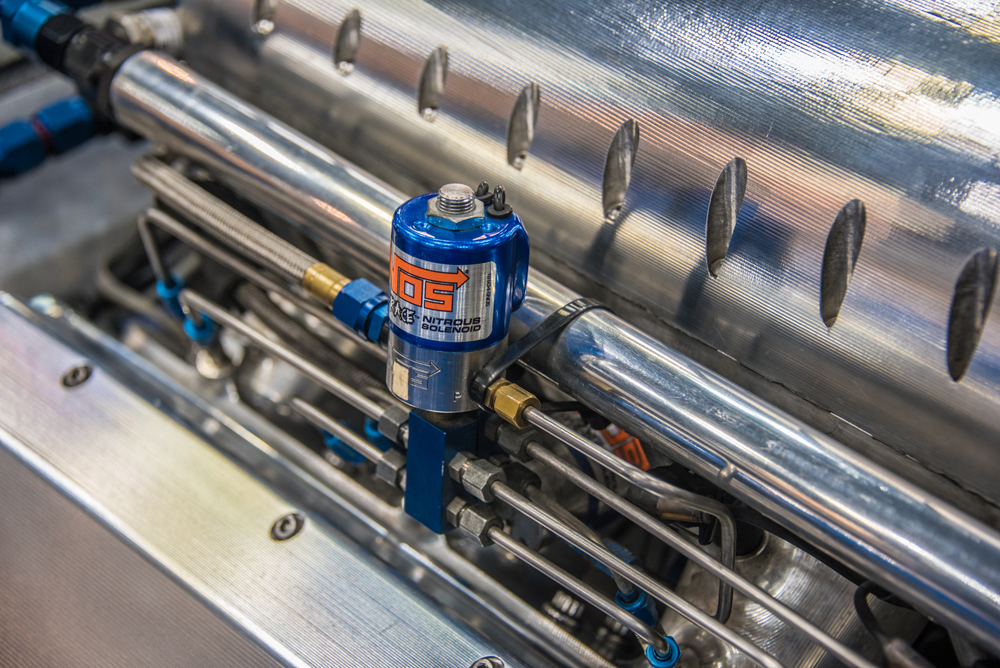
“Putting in more fuel and adjusting the timing in a motor for the additional power is easy for any EFI system these days,” he continued. “What separates one EFI from the other is how well you can control that power, how good is your boost control, how good is your nitrous progressive controller, what sort of timing management can you do. It’s more about managing power than making it these days as far as an engine controller is concerned.”
The sensors in an EFI system can also help the car go down the track faster and more reliably, he added. “We can add sensors to everything. For example, the amount of data we can collect from the torque converter to the back of the car is immeasurable in making a car go faster. Many engine guys get caught up with the engine making more power, when a converter can be worth five to six mph in the eighth-mile, and that’s so much easier to do. All you need is a driveshaft sensor plus your engine rpm to figure it out.”
At the Shop
The relationships these power adder companies have with engine builders run the gamut from a close partnership to more of a “you do your thing, I’ll do mine” situation.
“We pride ourselves in working directly with our customers, engine builders, and racers,” said Martz. “They have access to our knowledge base on what works and what doesn’t. We like to think the users of our products are an extension of the Vortech brand, and we do everything we can to make sure they are using the correct blower for their application to make the most power available.”
That relationship can be beneficial to both the racers and Vortech, Martz said. In working with drag racer Terry Leggett, “who was running our 131A, he needed a little more power up top. We observed his engine, looked at the airflow requirements to make more power, and made a new iteration of the 131A specifically for him, to make sure he’d have the power he needs to be competitive.” Vortech then replaced the 131A in its lineup with that new supercharger, now called the 131B. “The 131B is now proven to make more power in all situations, so it becomes the new production blower.”
“We usually work just with the racers,” said Kenney. “Engine builders stick to the engines, mostly, and usually we’re dealing with the guy building the car or the guy who owns the car. And his engine builder is fine with it. He builds an engine that’s capable of making 2,000 horsepower, and we tell them which turbos are going to be the best to make 2,000 horsepower for that engine.”
“Full-Race works with engine builders around the world and in many different types of racing venues,” Raicer said. “Some guys are awesome to work with. They totally get what we’re doing and are all about it. Others are like, ‘None of this is new. I’ve been using turbos forever. I know how to do this and don’t need math.’ But if we can work together and have an open mind, reaching across the aisle and learning from one another is the best way to get something done.”
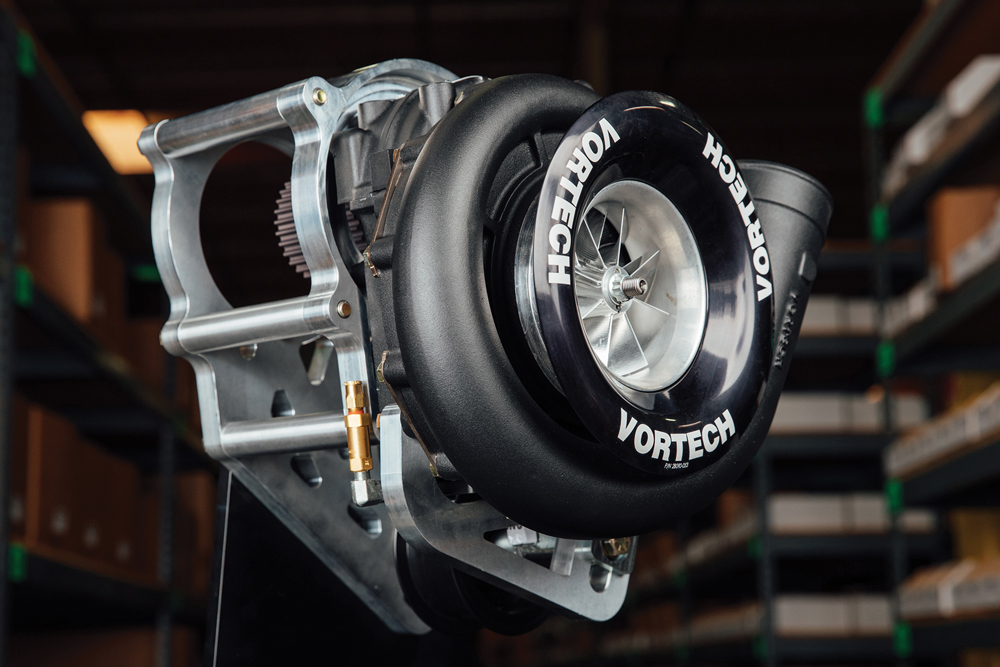
The most successful engine builders are “using all the data that’s given to them,” said Witte. “They’re looking at any and every line of data in the logs from the engine, from the car, and from their customers, and making science-driven choices based on them.”
“One common factor in any successful race effort is preparation,” added Page. “Those who spend the time researching and preparing for competition will consistently win.”
What’s New?
Not everyone we spoke with was ready to reveal the new products they have in the pipeline—we did get a few, “We are keeping these developments close to the vest right now,” and “We can’t release further information at this time.” Some, though, were happy to share.
Vortech has developed a new billet bracket to mount its popular V-30 race superchargers to any LS-based engine. “Our V-30 superchargers are modular,” Martz explained. “The same gear case is used from 1,200 horsepower all the way up to 3,000 to be utilized for different race classes.”
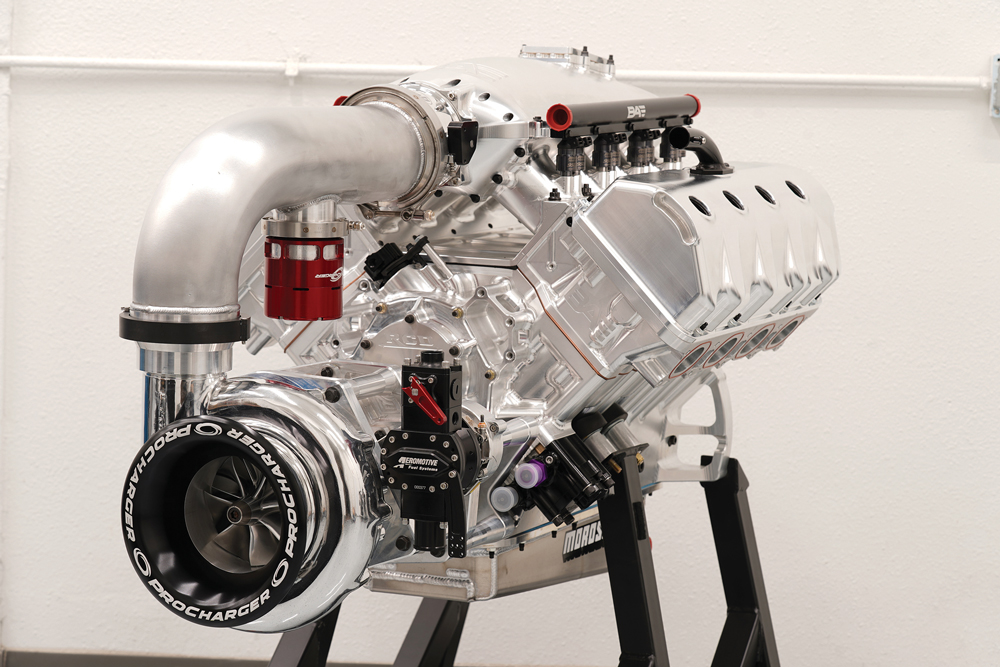
Vortech also offers gear-drive packages, as racers like the V-30’s gear drive “but sometimes they don’t have the space for it. We’re designing these race brackets for alternative mounting solutions.”
Walt Sipp at ProCharger said the company is “continuing to round out fitment for our popular CrankDrive gear drive. This gives racers, engine builders, and chassis builders a complete solution for more engines than ever without having to modify or buy parts from multiple places. We now have direct fitment for small block Ford, small and big block Chevy, LS, Noonan, AJPE, BAE, Visner, and MBR. We also continue to evolve and improve race blowers to maximize power and durability, and recently released our new Pro Mod-focused Competition Bypass Valve.”
Raicer mentioned upgrades made by turbocharger manufacturers—some of them ongoing—to improve their components.
In the decade since BorgWarner introduced its EFR (Engineered for Racing) ball-bearing turbos, “we’ve seen them prove themselves to be just crazy reliable,” Raicer said. “The IndyCar teams focus on tires, suspension, aero, and they never have to think twice about the EFR turbo reliability. The other really cool thing about their turbo is the Gamma-Ti turbine wheel material. It’s not metal and it’s not ceramic. It’s called an interstitial compound that’s part titanium, part aluminide, and one-half the rotating mass of a traditional Inconel turbine. This really makes a difference, especially in a road race, circuit, street, or drift setting where spool is everything. They’re remarkably responsive.”
Garrett has recently “brought out their latest turbo technology they call the G-Series turbos,” Raicer added. For its turbine wheel material, “Garrett went to an exotic superalloy called Mar-M247. It’s not as low mass as BorgWarner’s, but it can be used in larger diameter turbos and handle higher exhaust gas temps for applications where EGT may exceed 1,000 degrees Celsius. The Garrett turbos can do things that the BorgWarner can’t, and the BorgWarner can do things the Garrett can’t. It’s different approaches. It’s truly racing.”
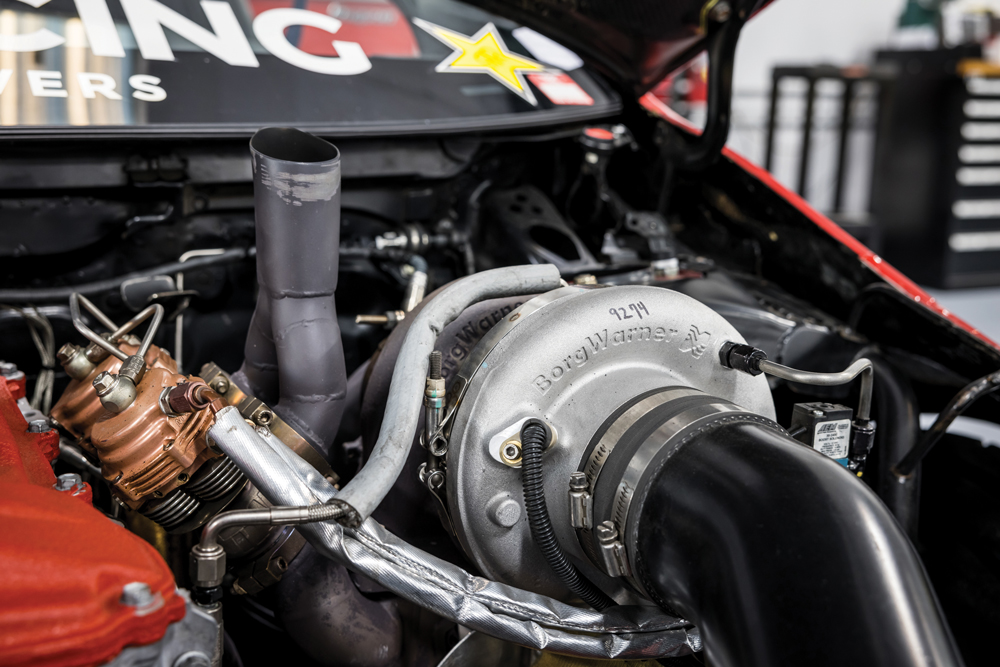
Further into the future, Raicer sees potential in e-Turbos. “These are turbos with a brushless electric motor in their center section,” he explained. “You don’t have to wait for exhaust gas to spool the turbo. You can have boost any time you want it at the touch of a button.” E-Turbos also don’t necessarily need a wastegate to expel excess boost. That energy instead can go to regenerating power for the battery.
E-Turbos are already in use in Formula 1 racing, and they’re beginning to appear in OE and commercial vehicle applications. The challenge in further adaptation, said Raicer, is how to power and control them. “You need a huge amount of energy to power an e-Turbo. Most cars use 12-volt electrical systems, but to run an e-Turbo you need a minimum of 48 volts, ideally more.”
While e-Turbos may be a decade or more away from impacting the aftermarket, “in the near-term electronic wastegates are the first sign of turbo electrification,” Raicer said. “Every new Honda, Ford, and BMW has an electronic wastegate. They are without question the first electrification we’re seeing. And it’s our job to begin bringing electronic wastegates to the racing and performance community.”
SOURCES
–
AGP Turbo
agpturbo.com
Edelbrock
edelbrock.com
Full-Race Motorsports
full-race.com
Holley Performance Products
holley.com
Nitrous Express
nitrousexpress.com
ProCharger
procharger.com
Vortech Superchargers
vortechsuperchargers.com
 MEMBERSHIP LOGIN
MEMBERSHIP LOGIN JOIN PRI
JOIN PRI
